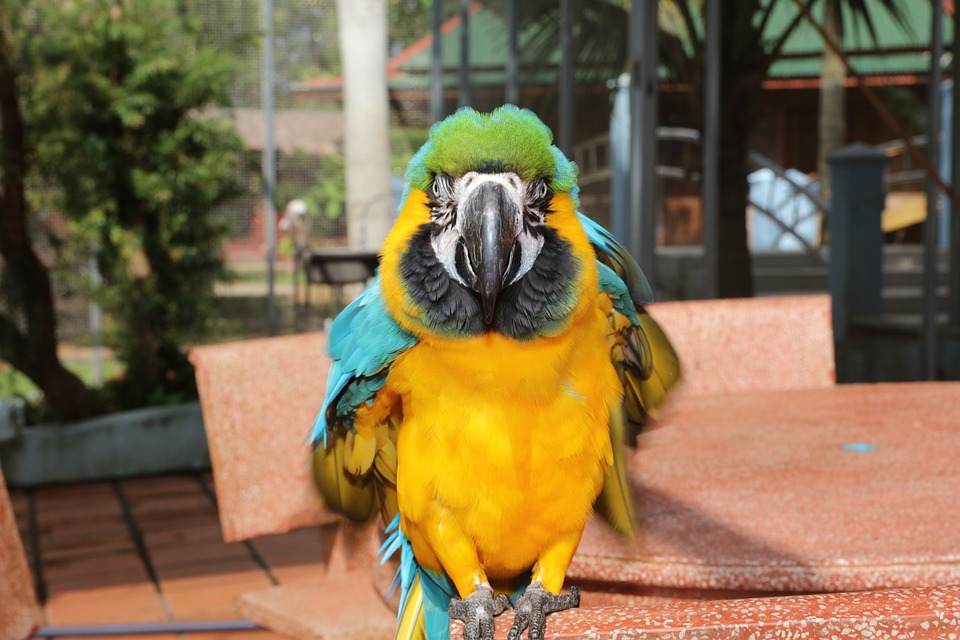Parrots are highly intelligent creatures known for their ability to mimic human speech and gestures. By harnessing their cognitive abilities, you can teach your parrot a range of tricks and commands. In this article, we will focus on training your parrot to nod “yes” or shake “no” on command, enabling a unique form of communication with your feathered friend.
Before diving into teaching specific commands, it’s important to establish a strong foundation for training. Here are a few essential tips to get started:
1. Positive Reinforcement: Parrots respond well to positive reinforcement techniques. Reward your parrot with treats, praises, or favorite toys when they exhibit the desired behavior.
2. Consistency: Consistency is key in training any animal, including parrots. Establish a routine and stick to it, ensuring regular training sessions to reinforce learning.
3. Patience and Time: Parrots learn at their own pace, so be patient and allow ample time for your parrot to grasp new commands. Rushing the process may lead to frustration and hinder progress.
Teaching Your Parrot to Nod “Yes”
Teaching your parrot to nod “yes” is a fun and interactive way of enhancing communication. Follow these step-by-step instructions to train your parrot:
1. Choose the Command Gesture: Decide on a specific gesture that your parrot will associate with the “yes” command. It can be a simple nodding motion or any distinct movement that is easy for your parrot to mimic.
2. Capture the Behavior: Observe your parrot for moments when it naturally nods its head, even slightly. When you notice this behavior, say “yes” and immediately reward your parrot with a treat or praise. Repeat this process multiple times to reinforce the association between the behavior and the command.
3. Introduce the Cue: Once your parrot starts associating the nodding behavior with the “yes” command, introduce a verbal cue such as saying “yes” or “nod yes” right before your parrot performs the action. Be consistent with the cue to reinforce the connection.
4. Practice and Refinement: Gradually reduce the frequency of treats, focusing on intermittent reinforcement to solidify the behavior. Practice the command in various environments to ensure your parrot generalizes the behavior.
Teaching Your Parrot to Shake “No”
Similar to nodding “yes,” teaching your parrot to shake “no” involves a step-by-step process. Follow these guidelines to train your parrot:
1. Choose the Command Gesture: Select a gesture that your parrot will associate with the “no” command. A side-to-side or shaking head motion can be an ideal choice.
2. Capture the Behavior: Observe your parrot for instances when it moves its head in a shaking or side-to-side motion. As soon as you notice this behavior, say “no” and promptly reward your parrot. Consistently reinforce this association to ensure understanding.
3. Introduce the Cue: Once your parrot starts associating the shaking behavior with the “no” command, introduce a verbal cue like saying “no” or “shake no” prior to your parrot performing the action. Consistency is vital for your parrot to grasp the connection.
4. Practice and Refinement: Gradually reduce the frequency of treats while practicing the command in different contexts. Consistency and repetition will help solidify your parrot’s ability to shake “no” on command.
FAQs (Frequently Asked Questions)
Q: Can any parrot learn to nod “yes” or shake “no”?
A: Yes, most parrot species have the cognitive abilities to learn these commands. However, individual learning capabilities may vary.
Q: How long does it typically take to train a parrot to nod or shake?
A: Training duration varies depending on the parrot’s age, temperament, and previous training experience. It can take anywhere from a few weeks to a few months.
Q: Are there any risks involved in teaching these commands?
A: When done correctly, there are minimal risks associated with this training. However, it is crucial to use positive reinforcement and avoid any forceful or stressful training methods.
Q: Is it possible to teach a parrot both commands simultaneously?
A: Yes, parrots are capable of learning multiple commands simultaneously. However, it is advisable to focus on one command at a time to avoid confusion.
Q: What if my parrot doesn’t respond to the training?
A: If your parrot is not responding, revisit the training technique, ensuring you are using positive reinforcement consistently. Seek advice from an avian behaviorist if needed.
Conclusion
Training your parrot to nod “yes” or shake “no” is an exciting journey that strengthens the bond between you and your feathered companion. Remember, patience, consistency, and positive reinforcement are the keys to successful parrot training. Enjoy the process and celebrate every milestone achieved, as your parrot masters these unique gestures of communication.









